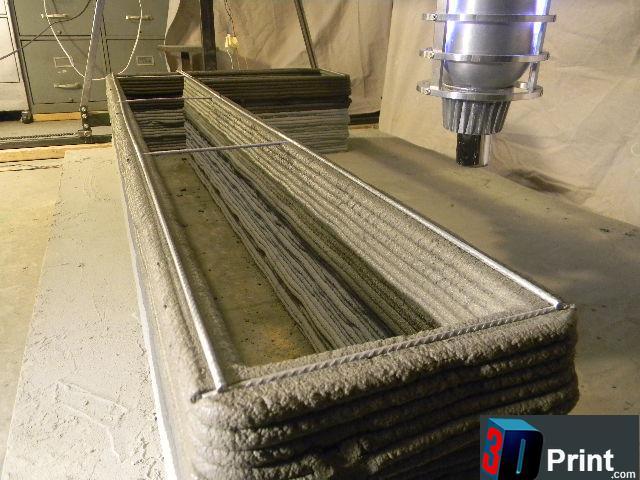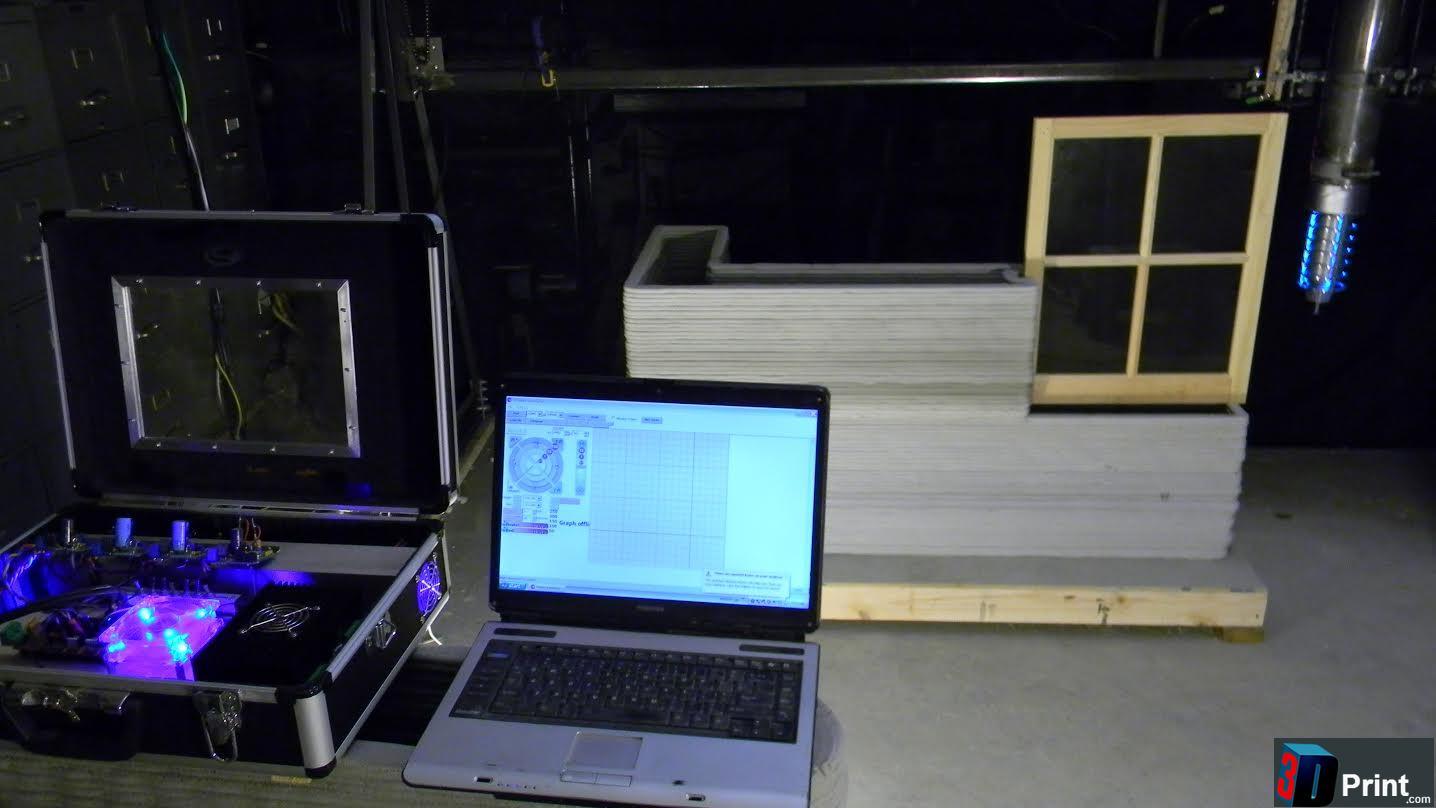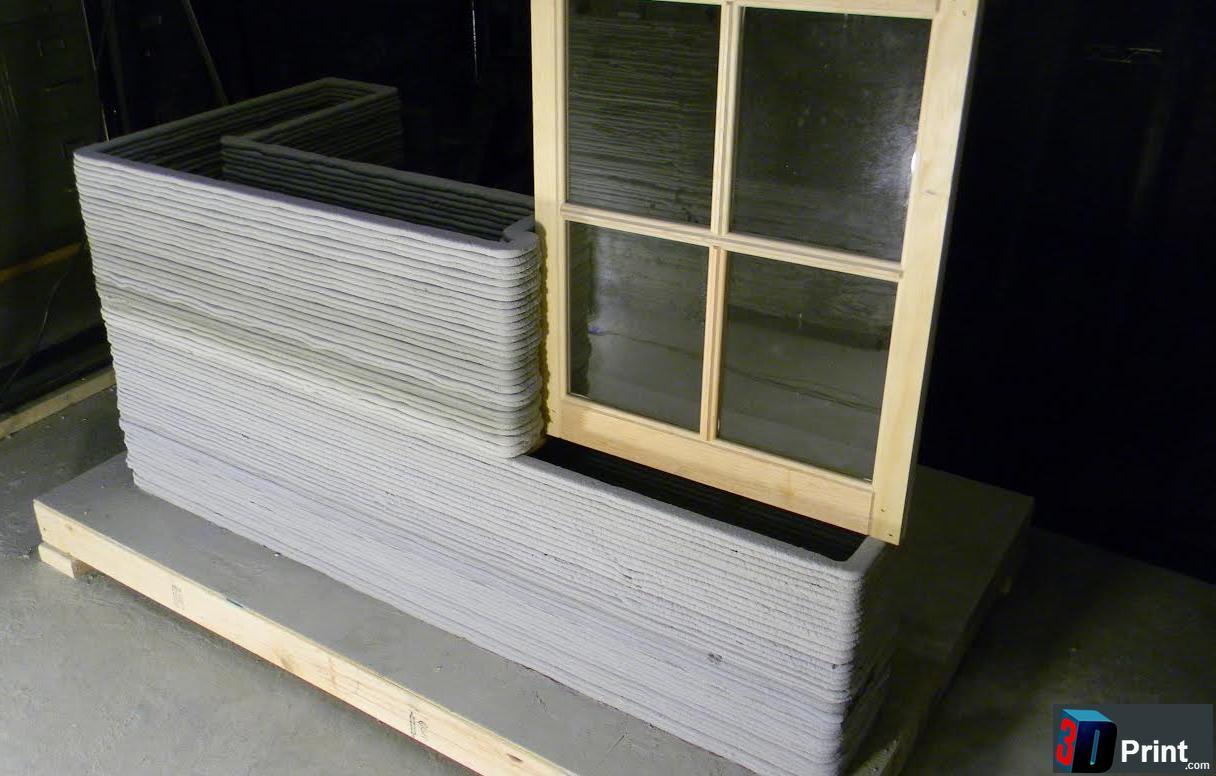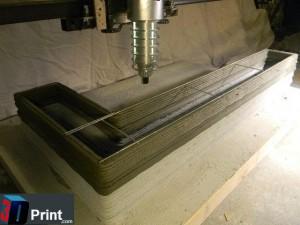 When it comes to the 3D printing of homes, the industry is still in the very premature stages. We have heard of the company in China that has constructed small homes using their 3D printing technology. They are said to be able to construct a home in just 24 hours.
When it comes to the 3D printing of homes, the industry is still in the very premature stages. We have heard of the company in China that has constructed small homes using their 3D printing technology. They are said to be able to construct a home in just 24 hours.
The quality of these homes doesn’t appear to be all that great. The surface area appears quite jagged, and they are homes that simply just don’t look that “nice”. There are also other projects that various individuals and companies have claimed to be working on. One such example is the Canal House project that is currently underway in Northern Amsterdam.
However, one man by the name of Andrey Rudenko is working on plans to take the 3D printing of homes to the next level. Rudenko is an experienced contractor with a background in engineering and architecture. He first plans to build a 2-story home in Minnesota, and then later construct a contemporarily-designed energy-saving house that relies heavily on thermal mass energy storage principles. Rudenko has been building his own 3D Printer capable of printing concrete homes for over a year now, and has already seen tremendous results.
“A cheap house built in 24 hours is not my goal,” explained Rudenko to 3DPrint.com in an interview. “My current focus is building well-insulated small or medium-sized homes of a contemporary design, definitely onsite. As an experienced builder, I know that to avoid problems in the future, it is more important to produce homes of a good quality, which may take longer to build than cheaper homes made quickly. It would be more beneficial to print a complete home, including the foundation for the staircase, fireplace, certain furniture (kitchen island etc), columns, interior walls, and any wiring or plumbing that would fit inside the printed walls.”
While some of the 3D printed homes that we have heard about in China, were in fact built in as little as 24 hours, they were basically just the outer shell of the homes. Wiring, and other construction was not factored into the time estimate. If you were to factor these processes into the equation you would get a time frame much greater than 24 hours. Also, Rudenko believes that his method not only will make a more high quality home, but it would also prevent workers from coming in contact with an “extensively dust-filled environment”.
“This is why I’m currently conducting a large scale of experiments to extend the possibilities of this new technology – printing different elements, structures, and studying and developing new techniques,” said Rudenko
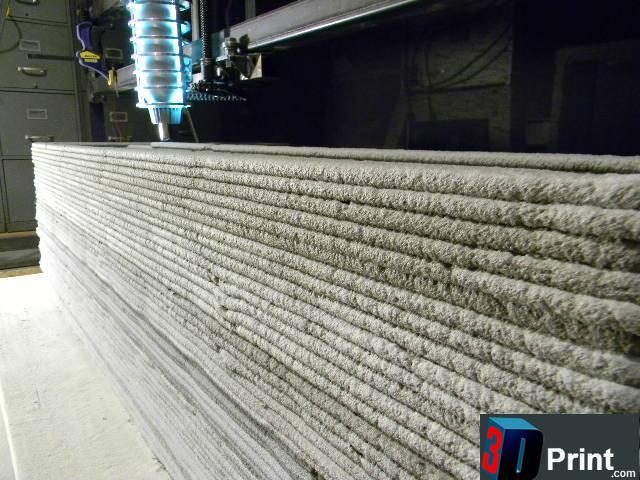
Rudenko’s printer produces a very good surface area, without the jagged edges we have seen in other 3D home printers.
He is also considering using the printed walls themselves as a decorative element for both the interior and exterior of the printed home.
“With a good quality, there will be very little need for sheetrocking of the wall surfaces,” he explained.
Rudenko’s main concern is acquiring the appropriate building permits needed for construction. 3D Printing isn’t exactly considered one of the “certified methods of construction” in the state of Minnesota. That will probably take some work, and perhaps some legal counsel.
As for the printer itself. Rudenko has built it based on the RepRap project, an open source 3D printing project that is extremely popular among 3D printing enthusiasts. For those familiar with RepRap printers, it’s comparable to a really big Mendel with the same Arduino Mega 2560 board, larger motors, and the same software/firmware chain.
Rudenko plans on beginning construction of the 2-story home sometime this summer. Current plans have the home being approximately 10m x 15m, with insulation, plumbing, etc. Before beginning construction on this full sized home, he plans to experiment by constructing a children’s playhouse castle, which will let him learn more about the capabilities of his printer, and make the needed adjustments prior to taking on the final project.

A sketch of the playhouse castle that Rudenko plans on printing prior to taking on the larger project of printing an entire 2-story home.
Currently the printer prints 20mm wide layers, that are 5mm in height, and uses a cement/sand mix as the “filament”. This has caused Rudenko many hours of work, trying to figure out and adjust the extrusion process of the cement mix.
“I don’t know of any cement mixes with an extremely short setting time,” said Rudenko. “But for the cement mix, if it is not touched or vibrated, each layer does have enough time to become hard enough to layer on top of; especially when it is warm out and sun radiation and wind speeds up the drying/curing time. My biggest problem at the moment is pushing the cement through the pump with its high viscosity. All existing pumps can use medium-viscosity at a high speed, but for the cement printer, a high viscosity at low speed is needed, and this is a new field of research. I have attained good results; however, I will keep advancing my extruder/pump design.”
Rudenko seems to believe that 3D printed houses could one day be the norm for home construction, as well as drastically reduce the amount of labor needed onsite.
“3D printing in construction will not wholly replace previous techniques, and materials such as brick will continue to be utilized,” he explained. “Rather, 3D printing will significantly supplement the manual work. The technology aims to considerably lower production cost, provide a safer and more comfortable building process, and allow for much more architectural flexibility. In place of an entire group of construction workers, two people will facilitate the 3D printing process: one with appropriate computer skills in charge of the programming, and one working with the materials (e.g. sand and cement), placing reinforcing steel bars inside the forms, maintaining the machine at the end of the day, and so forth.
Here is a video showing Rudenko’s 3D printer in action.
If all goes as planned and Rudenko succeeds at 3D printing his 2-story home, the next course of action will be to print a contemporarily-designed energy-saving house. He hopes that this home will considerably reduce the continuous need for heating and air conditioning.
“I have developed a concept that incorporates forgotten energy-saving technologies controlled through a computer,” hinted Rudenko.
As for Rudenko’s business plan. For now he is focused on printing these homes. He has said that he may think about selling DIY kits in the future, for the printer that he plans to use in the construction of these homes.
Discuss Rudenko’s project, in the discussion thread dedicated to this article on our forum.
Subscribe to Our Email Newsletter
Stay up-to-date on all the latest news from the 3D printing industry and receive information and offers from third party vendors.
You May Also Like
3D Printing News Briefs, April 13, 2024: Robotics, Orthotics, & Hypersonics
In 3D Printing News Briefs today, we’re focusing first on robotics, as Carnegie Mellon University’s new Robotics Innovation Center will house several community outreach programs, and Ugogo3D is now working...
Rail Giant Alstom Saves $15M with 3D Printing Automation Software 3D Spark
3D Spark has entered into a three-year deal with the rail giant Alstom. Alstom, a transport behemoth with annual revenues of $16 billion, specializes in the manufacture of trains, trams,...
Meltio Expands Global Reach with New Partnerships in the Americas and Europe
Spanish 3D printing manufacturer Meltio has expanded its sales network across the globe. With the addition of three new partners in the United States, Brazil, Argentina, and Italy, Meltio aims...
3D Printing Webinar and Event Roundup: April 7, 2024
Webinars and events in the 3D printing industry are picking back up this week! Sea-Air-Space is coming to Maryland, and SAE International is sponsoring a 3D Systems webinar about 3D...


